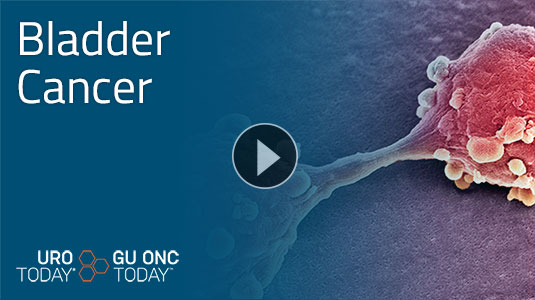Beyond the Buzzwords: How AI and Advancing Diagnostic Technologies Will Transform Early Bladder Cancer Care
Over the past few years, artificial intelligence (AI) has gone from sci-fi prophecies to real-life application. And it’s accelerating fast. But as with any novel technology, it’s important to look beyond extreme examples and instead focus on the realistic practicalities of AI – and where its application might lead.
Read More
Photocure Partner Asieris announces completion of enrollment for Hexvix Phase III clinical trial in China
Reno, Nevada (UroToday.com) -- Photocure ASA (OSE: PHO), the Bladder Cancer Company, announces that its partner Asieris Pharmaceuticals (SSE: 688176) has communicated today that it has completed patient enrollment for the Hexvix
® Phase III bridging trial.
Read More
Clinical Data Demonstrates Reduced Risk of Recurrence in Non-Muscle Invasive Bladder Cancer with the Use of BLC
Photocure ASA, The Bladder Cancer Company, announces the publication of the study “The Impact of Blue Light Cystoscopy Use Among Non-Muscle Invasive Bladder Cancer Patients in an Equal Access Setting: Implications on Recurrence and Time to Recurrence”. The article was published online 28 April 2023 in the peer-reviewed medical journal
Clinical Genitourinary Cancer. Read More
Detecting Invisible Bladder Cancers with Blue Light Cystoscopy - Beyond the Abstract
Blue-light cystoscopy (BLC) is a photodynamic diagnostic technique that augments the detection of occult disease missed under traditional white light. Instillation of hexaminolevulinate, a heme precursor, causes preferential accumulation of protoporphyrin IX and other photoactive porphyrins in neoplastic cells, which are then excited under the wavelength of blue light (~450 nm) to fluoresce red. The sensitivity of BLC in detecting cancerous lesions is much higher than that of white-light alone (91% vs. 76%) and used together, BLC plus WLC has a sensitivity of 98.5%.
1 Read More
Clinical and economic impact of blue light cystoscopy in the management of NMIBC at US ambulatory surgical centers: what is the site-of-service disparity?
Management of non-muscle-invasive bladder cancer (NMIBC) significantly impacts healthcare resource utilization due to requirements for ongoing surveillance. White light cystoscopy (WLC) represents the traditional approach to NMIBC disease surveillance, though physicians utilizing WLC alone may fail to detect all cancerous lesions.
Read More
Bladder Cancer Technology: New Improved Blue Light Cystoscopy System Receives FDA Approval for Use in NMIBC in the U.S.
Reno, Nevada (UroToday.com) -- Photocure ASA, The Bladder Cancer Company, announces U.S. Food and Drug Administration (FDA) approval of a new and improved Blue Light system to be used with Photocure’s Cysview
® product in Blue Light Cystoscopy (BLC
®) procedures for the detection of non‐muscle invasive bladder cancer (NMIBC).
Read More
New Study Publication Reinforces the Clinical Benefits of Blue Light Cystoscopy in the ASC Setting; Supports Ongoing Initiatives to Further Improve Reimbursement
Reno, Nevada (UroToday.com) -- Photocure ASA, The Bladder Cancer Company, announces the publication of the study “Clinical and Economic Impact of Blue Light Cystoscopy in the Management of NMIBC* at U.S. Ambulatory Surgical Centers: What is the Site-of-Service Disparity?” in Urologic Oncology this week. The research objective was to quantify the clinical and economic impact of the incorporation of BLC in the management of NMIBC in ambulatory surgical centers (ASCs) considering 2022 Center for Medicare Services (CMS) patient-physician coverage and reimbursement.
Read More
Evaluation of Cxbladder and Adjudication of Atypical Cytology and Equivocal Cystoscopy
Background: Cxbladder diagnostic tests combine genomic information from urinary mRNA with phenotypic information to either rule out low-risk individuals or identify patients at a high risk of urothelial carcinoma (UC).
Objective: To evaluate the performance of Cxbladder and urine cytology, and Cxbladder's adjudication of atypical cytology and equivocal cystoscopy.
Read More
Photocure Collaborations at EAU Support the Latest Advancements in Bladder Cancer Technology
High-definition blue light cystoscopic imaging showcased at the European Association of Urology (EAU) Congress, Amsterdam Reno, Nevada (UroToday.com) -- Photocure ASA, The Bladder Cancer Company, announces that its collaborations with capital equipment providers support the most advanced technologies including recent blue light system upgrades.
Read More
Photocure Announces the Commercial Availability of Karl Storz’s New Blue Light System in the U.S.
Reno, Nevada (UroToday.com) -- Photocure ASA (OSE: PHO), the Bladder Cancer Company, announces the commercial availability of Karl Storz’s New Blue Light equipment powered by Saphira™ in the U.S.
As part of the rollout, Karl Storz plans to host a Virtual Launch event for the medical community streamed from its El Segundo, California office where Sia Daneshmand M.D. and Kristin Scarpato M.D. M.P.H. will discuss the clinical benefits of using blue light cystoscopy (BLC®) with Cysview® for NBMIC*,
Read More
Photocure Announces the Publication of Pre-Clinical Study Results Supporting the Anti-tumor Effect of Hexaminolevulinate with Blue Light in Bladder Cancer Model
Reno, Nevada (UroToday.com) -- Photocure ASA, the Bladder Cancer Company, announces the publication of new results from its exploratory research program in the journal Biomedicines, entitled “Antitumor Effect and Induced Immune Response Following Exposure of Hexaminolevulinate (HAL) and Blue Light in an Orthotopic Model of Rat Bladder Cancer”. These results support initial pre-clinical data on the potential anti-tumor effect of HAL, which was presented at the BLADDR 2019 congress.
Read More
Safety of repeat blue light cystoscopy with hexaminolevulinate (HAL) in the management of bladder cancer: Results from a phase III, comparative, multi-center study.
The therapeutic benefit of intravesical instillation of hexaminolevulinate (HAL) at the time of transurethral resection of bladder tumor (TURBT) has been demonstrated in multiple studies. The purpose of this study was to prospectively assess the safety of repeated administration of HAL from a phase III pre-trial planned analysis.
Read More
Utility of Blue Light Cystoscopy for Post-BCG Bladder Cancer Recurrence Detection: Implications for Clinical Trial Recruitment and Study Comparisons.
The utility of blue light cystoscopy (BLC) in patients receiving Bacillus Calmette Guerin (BCG) during post-treatment cystoscopy is not well understood. Our objective was to determine if BLC improves recurrence detection in non-muscle invasive bladder cancer (NMIBC) patients undergoing BCG.
Read More
Efficacy and Safety of Blue Light Flexible Cystoscopy with Hexaminolevulinate in the Surveillance of Bladder Cancer: A Phase III, Comparative, Multicenter Study
PURPOSE: We compared blue light flexible cystoscopy with white light flexible cystoscopy for the detection of bladder cancer during surveillance.
MATERIALS AND METHODS: Patients at high risk for recurrence received hexaminolevulinate intravesically before white light flexible cystoscopy and randomization to blue light flexible cystoscopy.
Read More
Underutilization of Blue Light Cystoscopy for Bladder Cancer in the United States.
Blue light cystoscopy (BLC) during transurethral resection of bladder tumor (TURBT) is guideline-recommended as it improves cancer detection and decreases recurrence of the disease. However, the extent to which BLC is used has not been established.
Read More
Underutilization of Blue Light Cystoscopy for Bladder Cancer in the United States - Beyond the Abstract
Blue light cystoscopy (BLC) for the management of non-muscle invasive bladder cancer (NMIBC) is an evidence- and guideline-supported intervention that has been shown to increase cancer detection and decrease recurrence.
Read More
Retrospective German claims data study on initial treatment of bladder carcinoma (BCa) by transurethral bladder resection (TURB): a comparative analysis of costs using standard white light- (WL-) vs. blue light- (BL-) TURB.
Photodynamic diagnosis using hexaminolevulinate (HAL)-guided BL-TURB may reduce the recurrence risk in non-muscle invasive BCa compared to standard WL-TURB due to more sensitive tumor detection. The impact of the initial use of WL- vs.
Read More
Macro and Microeconomics of Blue Light Cystoscopy with CYSVIEW® in Non-Muscle Invasive Bladder Cancer - Beyond the Abstract
Bladder cancer remains one of the most expensive cancers to manage. Newer technologies and medications further compound costs of care. Blue light cystoscopy (BLC) has been traditionally offered in the inpatient setting, however, in-office applications are available.
Read More
Macro and microeconomics of blue light cystoscopy with CYSVIEW® in non-muscle invasive bladder cancer.
To determine the estimated budget impact to practices that incorporate blue light cystoscopy (BLC) with hexaminolevulinate HCl (HAL) for the surveillance of non-muscle-invasive bladder cancer (NMIBC) in the clinic setting.
With the introduction of advanced technologies in the clinic setting such as HAL, further cost comparative research is needed to justify HAL as a high value option.
Read More
Association of smoking status and recurrence of non-muscle invasive bladder cancer among patients managed with blue light cystoscopy.
Smoking has a strong causal association with bladder cancer but the relationship with recurrence is not well established. We sought to assess the association of smoking status on recurrence of non-muscle invasive bladder cancer (NMIBC) in a contemporary cohort of patients with predominantly high-risk, recurrent NMIBC managed with photodynamic enhanced cystoscopy.
Read More
Blue light flexible cystoscopy with hexaminolevulinate in non-muscle-invasive bladder cancer: review of the clinical evidence and consensus statement on optimal use in the USA - update 2018.
Blue light cystoscopy (BLC) with hexaminolevulinate (HAL) during transurethral resection of bladder cancer improves detection of non-muscle-invasive bladder cancer (NMIBC) and reduces recurrence rates.
Read More
Prospective evaluation of blue light flexible cystoscopy with hexaminolevulinate in non-muscle-invasive bladder cancer.
Purpose: To evaluate the utility of blue light flexible cystoscopy (BLFC) for surveillance of non-muscle invasive bladder cancer (NMIBC). This was a prospective cohort of consecutive patients who underwent office BLFC for NMIBC. Clinical information was collected including cystoscopic findings and pathologic data.
Read More
[Cost-effectiveness analysis of blue light cystoscopy with hexylaminolevulinate in transurethral resection of the bladder]
Photodynamic diagnosis using the optical imaging agent hexaminolevulinate (HAL, Hexvix®, Ipsen Pharma GmbH, Ettlingen, Germany) as an adjunct to white light cystoscopy (WLC) during the initial transurethral resection of bladder tumours (TURB) improves the detection rate of bladder cancer and leads to fewer recurrences.
Read More
Blue Light Flexible Cystoscopy with Hexaminolevulinate in Non- Muscle-Invasive Bladder Cancer: Review of the Clinical Evidence and Consensus Statement on Optimal Use in the USA — Update 2018
Blue light cystoscopy (BLC) with hexaminolevulinate (HAL) during transurethral resection of bladder cancer improves detection of non- muscle-invasive bladder cancer (NMIBC) and reduces recurrence rates. Flexible BLC was approved by the FDA in 2018 for use in the surveillance setting and was demonstrated to improve detection.
Read More
Diagnosis and Pathology of Bladder Cancer
Diagnosis:
Clinical Presentation
There are no reliable screening tests available for detecting bladder cancer; hence the diagnosis is usually made based on clinical signs and symptoms. Painless hematuria – microscopic or gross – is the most common presentation and a hematuria investigation in an otherwise asymptomatic patient detects bladder neoplasm in roughly 20% of gross and 5% of microscopic cases.
1,2 Read More
The Efficacy of a Second BCG Induction Course for Non-Muscle Invasive Bladder Cancer - Expert Commentary
The American Urological Association (AUA) recommends that non-muscle invasive bladder cancer (NMIBC) patients with persistent or recurrent Ta or CIS should receive a second induction course of Bacillus Calmette-Guerin (BCG) after the first course. However, a significant number of patients decline. Real-world data evaluating the efficacy of a second BCG induction course is needed.
Read More
Urinary Biomarkers in Bladder Cancer: A Review of the Current Landscape and Future Directions - Beyond the Abstract
Nearly 80% of patients presenting with bladder cancer (BC) present with nonmuscle-invasive bladder cancer (NMIBC). Despite radical treatment, many of these patients experience disease progression. A surveillance program combining regular cystoscopy, upper urinary tract imaging, and urine cytology is typically instated to detect recurrence after radical treatment of NMIBC. This surveillance program has several shortcomings; amongst them the invasive nature of cystoscopy alongside the limited sensitivity (approximately 48%) of urine cytology.
Read More
An evaluation of the real world use and clinical utility of the Cxbladder Monitor assay in the follow-up of patients previously treated for bladder cancer.
Surveilling recurrent urothelial carcinoma (UC) requires frequent cystoscopy, which is invasive, expensive and time-consuming. An accurate urinary biomarker has the potential to reduce the number of cystoscopies required during post-treatment surveillance.
Read More
Non-muscle Invasive Bladder Cancer: Overcoming Diagnostic and Therapeutic Challenges
Published Date: October 2020In 2020, approximately 81,000 cases of urothelial carcinoma of the bladder will be diagnosed in the United States, with nearly 18,000 associated deaths.
1 Bladder cancer disproportionally affects men and is associated with well-defined environmental risk factors—tobacco use underlies approximately 50% of cases.
2 Nonmuscle-invasive bladder cancer (NMIBC) is primarily managed by transurethral resection, risk-stratified use of intravesical chemotherapeutic or immunotherapeutic agents, and close surveillance.
Read More
Blue Light Cystoscopy: Insights on Recurrence, Progression, and Clinical Management
Published Date: September 2018
More than 81,000 individuals are diagnosed with bladder cancer in the United States every year, of whom 75% have non-muscle invasive disease.1,2 Unfortunately, half these cases recur despite transurethral resection of bladder tumor (TURBT), and from 5% to 25% of repeated recurrences progress to muscle-invasive disease.3,4,5
Read More
Blue light cystoscopy for the diagnosis of bladder cancer: Results from the US prospective multicenter registry
Blue light cystoscopy (BLC) using hexaminolevulinate (HAL/Cysview/Hexvix) has been previously shown to improve detection of non-muscle-invasive bladder cancer (NMIBC). Herein, we evaluated the detection of malignant lesions in a heterogenous group of patients in the real world setting and documented the change in risk category due to upstaging or upgrading.
Read More
Detecting Invisible Bladder Cancers with Blue Light Cystoscopy.
A 90-year old man with no significant past medical history presented to urology clinic complaining of gross hematuria, urinary frequency, and dysuria. Previous urine cytology was atypical but two white-light cystoscopies failed to show any lesions.
Read More












